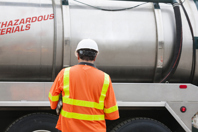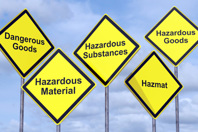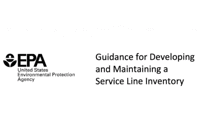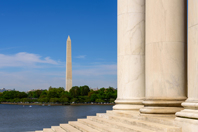REGULATIONS AND LEGISLATION RESOURCES
-
Climate change has made extreme weather events such as bushfires and floods more frequent and more likely in recent years, and the trend is expected to continue. Will firsthand experience of these events change how people think and act about climate change, making it seem immediate and local rather than a distant or future problem?
-
After years of discussion, the EPA recently announced a proposal that would classify nine PFAS as hazardous waste. The decision comes less than a year after the agency's proposed individual maximum contaminant levels (MCLs) of 4 ppt for PFOA and PFOS as well as a hazard index (HI) of 1.0 for a combination of them and four other substances. The announcement has undoubtedly triggered concerns among water industry professionals about the impact it will have on their operations.
-
WSP water experts discuss the proposed changes to the National Environmental Policy Act and what they would mean for federal agency compliance.
-
As states and the federal government attempt to crack down on the proliferation of PFAS and their health consequences with a spate of new regulations, there is one significant upcoming ruling that will have tremendous impact for compliance and costs: the final rule on PFAS CERCLA designation.
-
BlueConduit is proud to have their work cited in several sections of the EPA's Service Line Inventory Guidance.
-
The autonomous operation of plants, the use of data in real time and the remote driving of robots are just a few examples of how 5G will build smarter water utilities.
-
Like many parts of the economy, the engineering sector has been negatively affected by the COVID-induced downturn. Based on the federal government’s own numbers, the engineering and design sector’s revenue declined by 7 percent in 2020, and the ACEC Research Institute's newly released 2021-2025 Engineering Industry Forecast projects another 4 percent decline in 2021 before recovery begins to kick in during the second half of the year. The industry will grow modestly (3 percent annually) from 2022-2024, primarily due to pandemic-related stimulus spending, but then will tail off slightly in 2025.
-
Responsible parties all want clean water and to abide by the rules that secure it, but what if the rules do more harm than good? With a recent Supreme Court decision on wastewater discharges and a change of presidential administrations as the backdrop, this op-ed from the National Ground Water Association addresses the conundrum.
-
I recently wrote an open letter to President Joe Biden requesting a commitment to make the funding of U.S. water infrastructure a priority in his Build Back Better program. I sent a similar open letter to president-elect Donald Trump back in 2016.
-
COVID-19 has upended life across America, disrupting business as usual in every sector and shifting the way we relate to, and work with, one another. In many ways, and across many sectors, the pandemic exposes and reinforces structural challenges and social inequities. In the water sector, this plays out through access to water, the cost of water services, governance structures, and even how we fund and deliver those water services.









